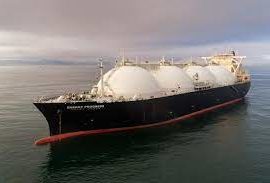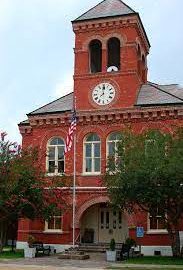
A fish kil was found and why did they die? Was it a leak in pipes from he sugar mill?
The Cora Texas sugar cane mill in Iberville Parish had a pipeline leak and emergency releases of potent black wastewater in December and January that significantly exceeded permit limits, breaking state law, state inspectors have concluded. Department of Environmental Quality inspectors uncovered the violations after an investigation sparked by complaints about somewhat unusual winter fish kills in neighboring Assumption Parish several miles to the southwest of the mill around the same time as the releases from Cora Texas, agency reports show. Residents of the retirement and fishing community of Bayou Corne and from the small town of Pierre Part reported the kills and rotten, foul-smelling water in the Bayou Corne waterway and farther south in Lake Verret, state reports say. Some, like Bob Deaton, a longtime Bayou Corne resident, retired engineer and avid fisherman, aired suspicions the mill was the cause and supplied photographs of black water discharges from sugar mill settling ponds, reports show. The problem water got bad enough that Assumption Parish Police Jury President Leroy Blanchard sent DEQ a letter in mid-February, urging an investigation of its cause whatever it may be. “The recreational fishing industry has an enormous impact on the economy of Assumption Parish. It is vital that this valuable resource be protected,” he added.
nola.com
DEQ has referred the case to the enforcement division.
After DEQ’s investigation, it has recently referred the sugar mill to its Enforcement Division for possible action, which can include a compliance order, penalties and other measures, an agency letter says. But an important question remains unresolved: What role, if any, did Cora Texas’ releases play in the foul water and fish kills in Bayou Corne and Lake Verret? In responding to the Assumption president’s February letter, DEQ officials said their investigation had focused on Cora Texas, but they have since said no connection had been made between the fish kill, foul water and the mill discharges. DEQ officials cited the vast size of the watershed feeding into Bayou Corne and Lake Verrett for the uncertainty and also the potential for falling leaves in winter to have the same poor effect on water quality. “It’s not a sure thing that that facility would have been the one that caused it. It could be other natural causes,” said Greg Langley, DEQ spokesman.
Heavy rains did force the release of waste water.
Heavy rains during grinding season last winter did force the sugar mill in White Castle to release millions of gallons of the black wastewater prematurely for several weeks from some of its 700 acres of settling ponds three miles south of its La. 1 mill, according to the company owner and DEQ reports. A Cora Texas report on Dec. 23 indicated then that if the releases hadn’t started happening then, the mill risked having some of its pond levees overtopped, “causing a dangerous situation which will soon lead to a levee failure and discharge of large quantities of wastewater.” The wastewater in the ponds comes from air scrubbers at the mill, the milling of the often-muddy cane itself and other purposes, picking up dirt, bagasse ash and other grime in the process, the company owner said. The ponds are designed to clarify this black slurry water by letting those pollutants settle out over several months after grinding season ends in January and before water releases typically begin in late spring. In December, though, the slurry water in the ponds was just inches from the levee tops, Cora Texas’ consultant told DEQ. “Unfortunately, it was difficult if not impossible to hold the water any longer,” Cora Texas environmental consultant Erin Colborn wrote to the agency. The emergency releases exceeded the mill’s permit limits nearly three to 46 times the levels set for suspended solids and for biological pollutants that can lead to low-oxygen water and kill or drive away aquatic life, agency reports say.
The pipeline has been fixed and more area has been set aside for holding ponds.
Buckley Kessler, general manager of Cora Texas, which employs a few hundred people, said his company has already fixed the pipeline leak and is adding 150 acres of new ponds to boost storage capacity for the next season. But Kessler, whose family has owned the mill for almost 100 years, disputed any tie between the releases at his mill and the fish kill and foul water in Bayou Corne. The mill ponds do empty into Bayou Sigur, which later becomes Muddy Bayou and ultimately winds up in Bayou Corne, Grand Bayou and Lake Verret 10 miles or more away, federal maps show. But, with Bayou Sigur in a watershed of thousands of acres with a web of other waterways that drain into the Lake Verret Basin, Kessler claimed that any releases from his ponds are diluted by the time they make so far south. On a tour of his mill and fields in late April, Kessler showed darker water coming from one of the pond release points and then drove down to a bridge crossing Bayou Sigur and noted the dark water couldn’t be seen entering the light brown water of Bayou Sigur. “This is such a drop in the bucket,” he said. Kessler said he has explored discharging the slurry water into the Mississippi River but says federal authorities won’t allow it because of the amount of mud in the slurry. He said around 100,000 cubic yards of mud and ash residue wind up deposited in his ponds each year and gradually fill them up. That’s why he is building new ones for the next grinding season, he said.
Fish kills are normally in the summer but can occur in the winter.
Though fish kills most often happen in hotter summer months in south Louisiana, Brian Heimann, biologist manager with state Wildlife and Fisheries department’s inland fisheries group, said that winter fish kills do occur. It’s often around agricultural areas, as the Lake Verret Basin is, after sharp freezes or after heavy rains push cut-over cane and other agricultural debris into the water and trigger low oxygen levels. He said this winter’s fish kill, though uncommon, wasn’t the first for Bayou Corne and noted that Bayous Poydras and Choctaw in West Baton Rouge Parish, well north of Cora Texas but also near large agricultural operations, have had similar problems in past winters. Heimann said recent testing by his agency hasn’t found long-lasting damage to the Bayou Corne watershed’s fisheries. He speculated that, given the size of the watershed, Cora Texas may have played only a part among potentially many sources. “It’s just kind of a hard deal,” Heimann said. “There’s a lot of different drainages that go into that area, and it all funnels down into the Bayou Corne part and Grand Bayou, and so it’s really hard to trace.”
Protect the company.



